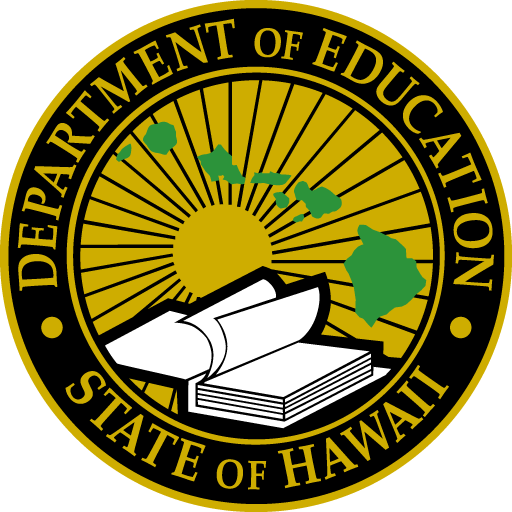We are committed to safeguarding student privacy and ensuring families are informed about their rights. From understanding the Family Educational Rights and Privacy Act (FERPA) to managing photo and media releases, this page provides key information and resources to help parents, guardians and students make informed decisions.
Explore policies, forms and guidelines designed to protect student data and uphold privacy in our schools.
Family Educational Rights and Privacy Act (FERPA)
Each year, Hawaiʻi public schools are required to notify parents of their rights under the federal Family Educational Rights and Privacy Act. These rights are generally broken into four sections. Here is a brief description of FERPA rights:
- The right to inspect and review the student’s education records within 45 days of the request.
- The right to request the amendment of the student’s education records that the parent, guardian or eligible student believe are inaccurate or misleading.
- The right to consent to disclosures of personally identifiable information (PII) contained in the student’s education records, except to the extent that FERPA authorizes disclosure without consent. One exception that permits disclosure without consent is disclosure to school officials with legitimate educational interests.
- ʻO ke kuleana e waiho i kahi hoʻopiʻi me ke Keʻena Hoʻonaʻauao o ʻAmelika e pili ana i ka hoʻokō ʻole ʻana o ke kula i nā koi o FERPA.
Parent Notification and Guide to Student ʻIkepili Privacy (PDF) Loaʻa nā unuhi ma:
Consent for Release of Student ʻIkepili
Mokuna 34 o Hawaiʻi Administrative Rules (PDF) provides for the following rights relating to the educational records of students:
- Hiki i nā mākua ke nānā, loiloi, hoʻopaʻapaʻa a loaʻa paha nā kope o ia mea; e ʻae i nā poʻe ʻē aʻe e nānā iā lākou; ae haawi aku i ka ae no ka hookuu ana.
- The rights of parents shall be transferred to the student who has attained 18 years of age.
- Nā haumāna under 18 years of age shall have the right to receive all educational data pertinent to facilitate instruction, guidance, and counseling.
Loaʻa ka Mokuna 34 ʻae no ka hoʻokuʻu ʻana i ka ʻike e ʻae i ka hoʻokuʻu ʻana a i ʻole ka loaʻa ʻana o nā palapala/ʻike kikoʻī.
ʻO ka Consent for Release of Information of Student Records Form (PDF) (RS 23-0270) are available in:
ʻIke Papa kuhikuhi
FERPA requires that the Department, with certain exceptions, obtain parent, guardian or eligible student’s consent prior to the disclosure of personally identifiable information from the student’s education records. However, the Department may disclose appropriately designated “directory information” without prior written consent, unless the parent or eligible student has advised the Department to the contrary in accordance with Department procedures.
The primary purpose of directory information is to allow the Department to include information from the student’s education records in certain school publications. Examples include, but are not limited to:
- A playbill, showing the student’s role in a drama production.
- ʻO ka puke makahiki makahiki.
- Hoʻohanohano roll a i ʻole nā papa inoa ʻike ʻē aʻe.
- Nā papahana puka.
- Nā pepa hana haʻuki, e like me ka mokomoko, e hōʻike ana i ke kaumaha a me ke kiʻekiʻe o nā lālā o ka hui.
ʻO ka Hoʻolaha ʻIke Papa kuhikuhi (PDF) aia no ma:
Student Publication Audio/Video Release Forms
Photos, video and audio recordings, and student work products/publications are not considered directory information, and may include personally identifiable information protected under FERPA. Also, student teachers participating in educator preparation programs and staff in professional development courses within the Department may have access to photos, video and audio recordings, and student work samples in the course of their participation in these activities, and therefore would need parent/guardian/eligible student consent to have access to these materials. This consent is given via the following forms:
Student Publication/Audio/Video (SPAV) Release Form for Events (PDF) (RS 21-0479): Optional to allow consent for a specific school event or publication for the school year.
The SPAV event release form (RS 21-0479) is also available in:
Student Publication/Audio/Video (SPAV) Release Form (PDF) (RS 24-0607): Pono e uhi i nā hanana kula a pau a me nā puke ke ʻole e hoʻopau ʻia.
The SPAV release form (RS 21-0480) is also available in:
Palekana i nā Pono Haumāna (PPRA)
Hāʻawi ka PPRA federal i nā mākua i kekahi mau kuleana e pili ana i kā mākou hana ʻana i nā noiʻi, hōʻiliʻili a hoʻohana i ka ʻike no ke kumu kūʻai aku, a me kekahi mau hoʻokolohua kino.
ʻO ka Palekana i nā Pono Haumāna (PDF) aia no ma:
Hoʻokuʻu ʻia ka ʻike i ka poʻe hoʻolimalima koa
The federal Elementary and Secondary Education Act requires the Department to provide to military recruiters, upon their request, the name, address and telephone number (including unlisted number) of secondary school students. Although military recruiters focus their efforts on high school juniors and seniors, the law allows for the gathering of this information from the broad category of “secondary” students, defined as students in grades 7-12. If any secondary student or the parent/guardian of a secondary student does not want the Department to provide the requested information to military recruiters, the secondary student or the parent/guardian must opt-out of providing such information.
ʻO ka Military Recruiters’ Request for Student Information Notice (PDF) aia no ma:
ʻO ka Puka hoʻokaʻawale i waho o ka poʻe hoʻolimalima koa (PDF) aia no ma:
Hoʻokuʻu ʻia nā ʻikepili o nā kula kiʻekiʻe
The Every Student Succeeds Act of 2015 requires all local education agencies to provide to institutions of higher education, upon their request, the name, address, and telephone number of secondary school students. Although post-secondary institutions focus their efforts on high school juniors and seniors, the law allows for the gathering of this information from secondary students. If any eligible student (18 years of age) or the parent/guardian of a secondary student does not want the HIDOE to provide the requested information to institutions of higher education, the secondary student or the parent/guardian must “opt-out” of providing such information.
ʻO ka Institutions of Higher Learning Request for Student Information Notice (PDF) aia no ma:
ʻO ka ʻO nā kula kiʻekiʻe o ka hoʻonaʻauao kiʻekiʻe puka puka puka (PDF) aia no ma:
Hoʻohana ʻenehana kuleana
The Department is committed to guide students in the use of technology as a tool to support their achievement. Parents/guardians should review the Nā alakaʻi alakaʻi no ka hoʻohana pono ʻana i ka ʻenehana (TRUG) (PDF) me kā lāua keiki; alaila kakau inoa i ka Puka Hoʻohana Kuleana Pono ʻenehana (TRUF) (PDF) e lilo i ʻike a me ka ʻaelike e mālama i nā lula, nā lula a me nā alakaʻi e pili ana i nā polokalamu kikohoʻe a ka 'Oihana a i hoʻolimalima ʻia paha, nā lawelawe pūnaewele a me nā lawelawe pūnaewele, hiki ke hoʻololi a hoʻonui ʻia e like me ka makemake e ka 'Oihana.
ʻO ka Nā alakaʻi alakaʻi no ka hoʻohana pono ʻana i ka ʻenehana (TRUG) (PDF) aia no ma:
ʻO ka Puka Hoʻohana Kuleana Pono ʻenehana (TRUF) (PDF) aia no ma:
Nā kumuwaiwai
- Pilikino Haumana Booklet, School Year 2025-26 (PDF)
- What is Student Data?: http://dataqualitycampaign.org/find-resources/what-is-student-data/
- FERPA guidance for parents and students: https://studentprivacy.ed.gov/audience/parents-and-students

NO KA IKE HOU
Lala Hooponopono a me ka Ikepili
Kelepona: 808-784-6050
leka uila
